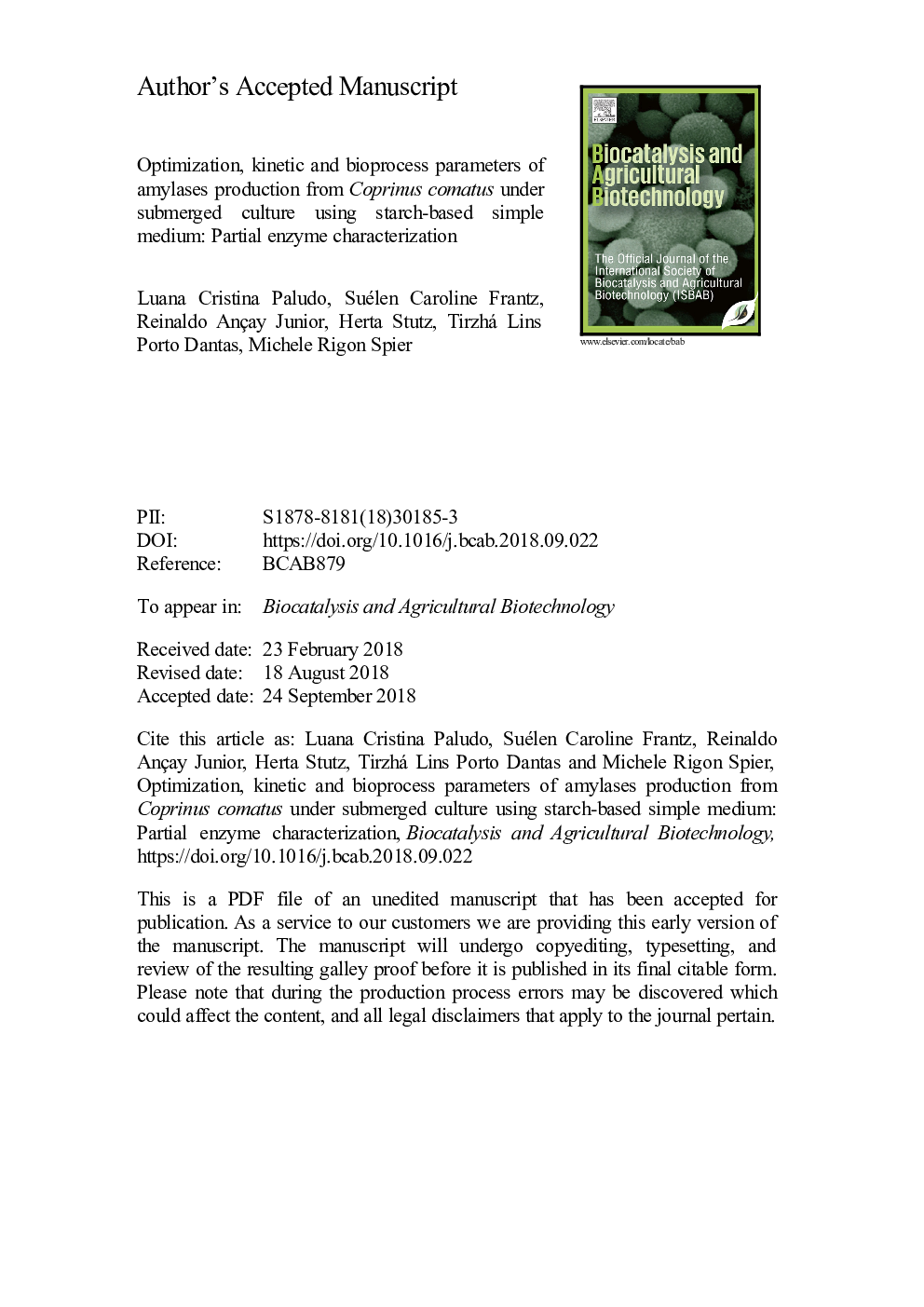| Article ID | Journal | Published Year | Pages | File Type |
|---|---|---|---|---|
| 11007658 | Biocatalysis and Agricultural Biotechnology | 2018 | 26 Pages |
Abstract
Amylases are among of the most important enzymes with industrial application, which can be produced by non-pathogenic saprophytic basidiomycetes, attracting great commercial interest, due to the fact that they are easy to cultivate and present extracellular enzymatic production. Twelve basidiomycete strains were screened for the production of amylolytic enzymes (α-amylase and glucoamylase) were Coprinus comatus, which had highest enzymatic production was chosen to perform the next steps. Next, a Plackett-Burman Screening Design 11/12 was carried out to select the significant variables, among the factors under analysis, three presented significant effect (pâ¯<â¯0.05) for the enzymes: starch, urea and Fe2(SO4)3. The increase in production using Central Composite Rotatable Design (CCRD)resulted in two models represented by the surface of response for both enzymes. In the final kinetics, the maximum activity was obtained after 48â¯h for α-amylase (5.84â¯Uâ¯mLâ1; 213â¯Uâ¯mgâ1) and in 44â¯h for glucoamylase (8.87â¯Uâ¯mLâ1; 147.93â¯Uâ¯mgâ1). The enzymes were characterized for pH, reaction temperature and metallic ions. Optimal pH and temperature for α-amylase were 6.5 and 50â¯Â°C, while for glucoamylase they were 6.0 and 50â¯Â°C. The presence of Mg2+ ions significantly increased the α-amylase production (43.16%). Glucoamylase, however, had an increase of 168.46% in the presence of Mn2+ ion. The optimization of the C. comatus culture increased the enzymatic production in relation to the production obtained in the selection of α-amylase in 153%, while the increase in glucoamylase was of 2,234%.
Related Topics
Life Sciences
Agricultural and Biological Sciences
Agricultural and Biological Sciences (General)
Authors
Luana Cristina Paludo, Suélen Caroline Frantz, Reinaldo Jr., Herta Stutz, Tirzhá Lins Porto Dantas, Michele Rigon Spier,
